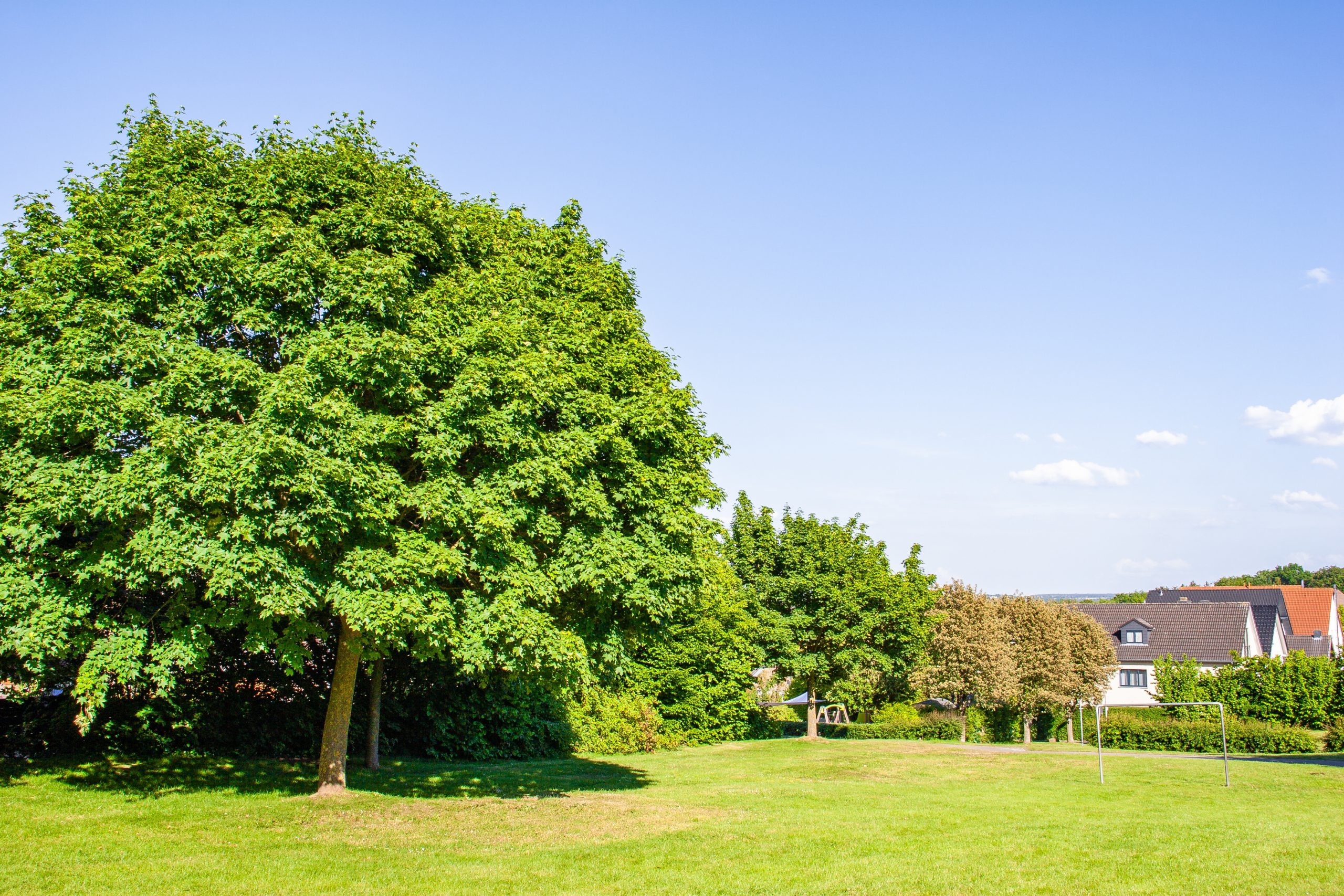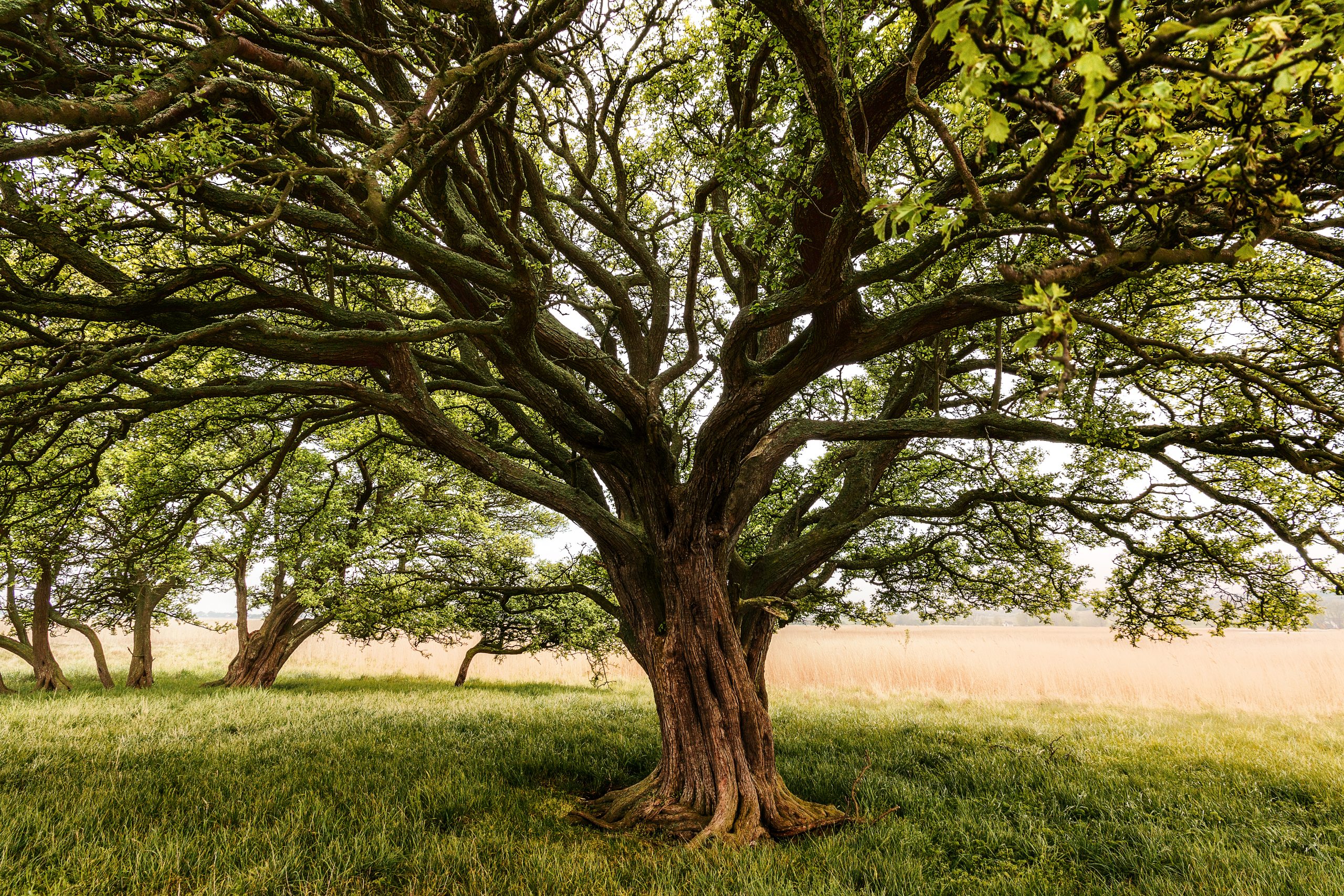THE SCIENCE BEHIND HOW TREES REGULATE CLIMATE
THE SCIENCE BEHIND HOW TREES REGULATE CLIMATE
Global climate balance refers to the delicate equilibrium between various environmental factors that collectively determine Earth’s climate patterns, temperature regulation, and overall ecological stability. Trees and ecosystems play a pivotal role in sustaining this balance through a complex interplay of processes that regulate atmospheric composition, temperature, water cycles, and more. Here’s a detailed explanation of how trees contribute to maintaining global climate balance:

- Carbon Sequestration and Greenhouse Gas Regulation: Trees are renowned for their ability to sequester carbon dioxide (CO2), a prominent greenhouse gas. During photosynthesis, trees absorb CO2 from the atmosphere and convert it into organic matter, such as leaves, branches, and roots. This process not only helps to mitigate the greenhouse effect by reducing the amount of CO2 in the atmosphere but also prevents its trapping of heat, which contributes to global warming.
- Oxygen Production: One of the most fundamental contributions of trees is oxygen production through photosynthesis. As trees absorb CO2 and release oxygen, they provide the essential breath of life for both humans and animals. Oxygen is a critical component of the atmosphere that supports respiratory processes and maintains atmospheric composition.
- Cooling Effects and Temperature Regulation: Trees have a cooling effect on their surroundings through transpiration, where they release water vapor from their leaves. This process cools the air and reduces surface temperatures. In urban areas, trees combat the urban heat island effect by shading surfaces and releasing moisture into the air, mitigating heat stress and lowering energy demand for cooling.
- Water Cycle Influence and Rainfall Patterns: Trees play a central role in the water cycle. Through transpiration, they release water vapor into the atmosphere, which contributes to cloud formation. This, in turn, affects regional rainfall patterns. Deforestation disrupts this process, leading to decreased moisture in the atmosphere, altered rainfall patterns, and potential droughts.
- Albedo Effect and Reflectivity: The albedo effect refers to the reflectivity of surfaces. Forested areas with darker canopies absorb more sunlight, contributing to warming. On the other hand, lighter surfaces like ice and snow reflect sunlight, helping to regulate temperatures. The presence of forests affects the planet’s overall albedo, influencing local and global climate conditions.
- Air Quality Enhancement and Pollution Mitigation: Trees function as natural air filters, absorbing pollutants such as particulate matter and gases from the atmosphere. This process helps improve air quality and reduce the concentration of harmful substances in the air. Cleaner air has positive impacts on human health, especially in urban environments.
- Atmospheric Chemistry and Cloud Formation: Trees release volatile organic compounds (VOCs), which can influence atmospheric chemistry. Some VOCs contribute to the formation of aerosols and cloud nuclei. Clouds have an intricate role in reflecting sunlight and regulating temperatures, impacting regional and global climate dynamics.
- Feedback Loops and Ecosystem Stability: Healthy ecosystems, including forests, are part of complex feedback loops that contribute to climate stability. For instance, forests absorb carbon, stabilize soil, regulate water cycles, and support biodiversity. When these systems are disrupted, through activities like deforestation, feedback loops can be disrupted, leading to amplified climate change effects.
- Climate Change Mitigation and Adaptation: Trees offer a natural solution for mitigating climate change. By sequestering carbon, they help offset human-induced greenhouse gas emissions. Reforestation and afforestation efforts play a critical role in enhancing carbon sinks, maintaining biodiversity, and supporting ecosystems’ ability to adapt to changing climate conditions.
In conclusion, maintaining global climate balance is a multifaceted endeavor that relies on the intricate interactions between various natural processes. Trees, as vital components of ecosystems, play a central role in this balance by influencing atmospheric composition, temperature regulation, water cycles, and more. Recognizing and preserving the role of trees in climate regulation is essential for a sustainable and resilient planet.
Role of Trees as Climate Regulators
Trees are among the most powerful and versatile natural tools for regulating the Earth’s climate. Their role extends far beyond providing shade and enhancing landscapes; trees actively influence atmospheric composition, temperature regulation, weather patterns, and the overall health of the planet. Here’s a comprehensive exploration of how trees function as climate regulators:

- Carbon Sequestration and Mitigation: Trees are renowned for their ability to sequester carbon dioxide (CO2) from the atmosphere. During photosynthesis, trees absorb CO2, convert it into glucose, and store it as biomass. This process reduces the concentration of CO2, a major greenhouse gas responsible for trapping heat and contributing to global warming. By serving as carbon sinks, trees mitigate the greenhouse effect and its associated impacts.
- Oxygen Production and Air Quality: Trees are vital oxygen producers through photosynthesis. As they absorb CO2 and release oxygen, they enhance the composition of the atmosphere. This oxygen-rich environment supports the respiratory needs of humans, animals, and all aerobic organisms. Additionally, trees help improve air quality by absorbing pollutants and particulate matter, leading to cleaner and healthier air.
- Transpiration and Cooling Effect: Transpiration is the process through which trees release water vapor from their leaves into the atmosphere. This moisture contributes to cloud formation, precipitation, and humidity regulation. As water vapor evaporates from tree surfaces, it cools the surrounding air, creating a localized cooling effect that benefits both the immediate environment and larger weather patterns.
- Albedo Modification and Temperature Regulation: The albedo effect refers to a surface’s reflectivity. Forested areas with dark canopies absorb sunlight, contributing to warming. However, their shading effects and cooling properties counteract this heat absorption. In snowy or icy regions, forests reflect sunlight, helping to regulate temperatures and prevent excessive warming.
- Water Cycle Regulation and Rainfall Patterns: Trees play a critical role in the water cycle. Through transpiration, they release water vapor into the atmosphere, contributing to cloud formation. This process affects regional and global rainfall patterns. Forested landscapes influence the balance between surface runoff, groundwater recharge, and atmospheric moisture, which in turn shapes local and regional climates.
- Atmospheric Chemistry and Aerosol Formation: Trees release volatile organic compounds (VOCs) into the atmosphere. Some VOCs participate in chemical reactions that contribute to aerosol formation and cloud nuclei. These particles influence cloud properties, affecting cloud cover and reflectivity. Consequently, the presence of trees indirectly impacts atmospheric composition and climatic conditions.
- Ecosystem Stability and Resilience: Forests and ecosystems act as stabilizing factors in the face of climate variability. They absorb excess water during heavy rainfall and release it during dry periods, reducing the likelihood of floods and droughts. Healthy ecosystems contribute to regional climate stability by regulating temperature, humidity, and atmospheric gases.
- Feedback Loops and Climate Dynamics: Trees are integral to various feedback loops that shape climate dynamics. For instance, as temperatures rise, tree growth may be affected, which in turn alters carbon sequestration rates. Deforestation disrupts these feedback loops, leading to amplified climate change impacts.
- Climate Change Mitigation and Adaptation: Trees are a natural solution for mitigating climate change. Reforestation and afforestation efforts increase carbon sinks, enhancing carbon sequestration. Healthy forests contribute to climate adaptation by stabilizing landscapes, preventing soil erosion, and supporting biodiversity.
In summary, the role of trees as climate regulators is multifaceted and essential for maintaining the balance of Earth’s climate systems. From carbon sequestration to temperature regulation and water cycle maintenance, trees exhibit an extraordinary capacity to shape the global climate and support the well-being of the planet and its inhabitants. Recognizing and safeguarding this role is vital for climate resilience and a sustainable future.
Carbon Dioxide’s Role in the Greenhouse Effect
The greenhouse effect is a natural phenomenon that plays a crucial role in regulating the Earth’s temperature and making it suitable for life. It involves the interaction of certain gases in the atmosphere, known as greenhouse gases, with incoming solar radiation and outgoing heat energy. Carbon dioxide (CO2) is a significant greenhouse gas that plays a central role in this process. Here’s a detailed explanation of how carbon dioxide contributes to the greenhouse effect:
- Incoming Solar Radiation: The Sun emits energy in the form of sunlight, which includes a range of wavelengths, including visible light and ultraviolet (UV) radiation. This energy travels through space and reaches the Earth’s atmosphere.
- Absorption and Reflection: When sunlight reaches the Earth, some of it is absorbed by the surface, such as land, oceans, and vegetation. The absorbed energy warms the Earth’s surface, causing it to emit heat energy in the form of infrared (IR) radiation.
- Outgoing Heat Energy: As the Earth’s surface emits IR radiation, it attempts to lose heat and cool down. This heat energy radiates upward into the atmosphere and eventually into space.
- Greenhouse Gas Interaction: Greenhouse gases in the atmosphere, including carbon dioxide, water vapor, methane, and others, interact with the outgoing IR radiation. These gases have the unique property of absorbing and re-emitting IR radiation at specific wavelengths.
- Absorption and Re-emission of IR Radiation: When IR radiation from the Earth’s surface encounters greenhouse gases like carbon dioxide, it is absorbed by the gas molecules. This absorption causes the gas molecules to vibrate and become energetically excited.
- Heat Redistribution: The excited gas molecules then re-emit the absorbed IR radiation in all directions, including back toward the Earth’s surface. This process effectively redirects some of the heat energy that was trying to escape into space.
- Warming Effect: The re-emitted IR radiation interacts with the Earth’s surface and warms it further. This additional warming leads to an increase in surface temperature, as the heat energy is trapped in the lower atmosphere by the presence of greenhouse gases.
- Natural Balance: The greenhouse effect is essential for maintaining a stable and habitable climate on Earth. Without it, the planet would be too cold to support life as we know it. However, an excess of certain greenhouse gases, particularly carbon dioxide from human activities like burning fossil fuels and deforestation, can enhance the natural greenhouse effect, resulting in global warming and climate change.
- Enhanced Greenhouse Effect: Human activities, such as the burning of fossil fuels (coal, oil, and natural gas), release large amounts of carbon dioxide into the atmosphere. This excess CO2 amplifies the greenhouse effect, trapping more heat and leading to a rise in global temperatures—this is referred to as the enhanced greenhouse effect.
In conclusion, carbon dioxide’s role in the greenhouse effect is pivotal in maintaining Earth’s temperature balance. While the natural greenhouse effect is essential for life, the excess accumulation of carbon dioxide due to human activities contributes to the enhanced greenhouse effect, leading to global warming and the associated impacts on climate patterns and ecosystems.
About Murray, Utah
Murray is a city situated on the Wasatch Front in the core of Salt Lake Valley in the U.S. state of Utah. Named for territorial governor Eli Murray, it is the state's fourteenth largest city. According to the 2020 census, Murray had a population of 50,637. Murray shares borders with Taylorsville, Holladay, South Salt Lake and West Jordan, Utah. Once teeming with heavy industry, Murray's industrial sector now has little trace and has been replaced by major mercantile sectors. Known for its central location in Salt Lake County, Murray has been called the Hub of Salt Lake County. Unlike most of its neighboring communities, Murray operates its own police, fire, power, water, library, and parks and recreation departments and has its own school district. While maintaining many of its own services, Murray has one of the lowest city tax rates in the state.
Neighborhoods in Murray, Utah
Murray Oakes, Grant Park, Southwood Park, Murray Park, Murray Park Restrooms, Willow Pond Park, Neighborhood Veterinary Care
Things To Do in Murray, Utah
Bus Stops in Murray, Utah to Truco Services, Inc.
Bus Stop in Murray Central Station (Bay C) Murray, Utah to Truco Services, Inc.
Bus Stop in State St @ 4801 S Murray, Utah to Truco Services, Inc.
Bus Stop in Murray North Station Murray, Utah to Truco Services, Inc.
Bus Stop in State St @ 4949 S Murray, Utah to Truco Services, Inc.
Bus Stop in Murray Central Frontrunner/Trax Station Murray, Utah to Truco Services, Inc.
Bus Stop in Murray Blvd / Vine St (SB) Murray, Utah to Truco Services, Inc.
Bus Stop in State St @ 3925 S Murray, Utah to Truco Services, Inc.
Bus Stop in State St @ 4824 S Murray, Utah to Truco Services, Inc.
Bus Stop in State St @ 5223 S Murray, Utah to Truco Services, Inc.
Bus Stop in Murray Blvd / Allendale Dr (NB) Murray, Utah to Truco Services, Inc.
Bus Stop in Murray Blvd @ 5039 S Murray, Utah to Truco Services, Inc.
Bus Stop in State St @ 4721 S Murray, Utah to Truco Services, Inc.
Driving Directions in Murray, Utah to Truco Services, Inc.
Driving Directions from Woodruff Tree Trimming and Removal to 4640 Commerce Dr, Murray, UT 84107, USA
Driving Directions from Reliable Tree Care to 4640 Commerce Dr, Murray, UT 84107, USA
Driving Directions from Tree Pro-Tech to 4640 Commerce Dr, Murray, UT 84107, USA
Driving Directions from Prestige Tree And Landscape to 4640 Commerce Dr, Murray, UT 84107, USA
Driving Directions from Excellence Tree & Landscape to 4640 Commerce Dr, Murray, UT 84107, USA
Driving Directions from Amen Trees to 4640 Commerce Dr, Murray, UT 84107, USA
Driving Directions from Tim's Tree Care to 4640 Commerce Dr, Murray, UT 84107, USA
Driving Directions from Jordan Tree Service - Murray to 4640 Commerce Dr, Murray, UT 84107, USA
Driving Directions from Arbor Works to 4640 Commerce Dr, Murray, UT 84107, USA
Driving Directions from Diamond Tree Experts to 4640 Commerce Dr, Murray, UT 84107, USA
Driving Directions from Green Tree Arborist to 4640 Commerce Dr, Murray, UT 84107, USA
Driving Directions from TruCo Services to 4640 Commerce Dr, Murray, UT 84107, USA
Reviews for Truco Services, Inc. Murray, Utah
Emily Abercrombie
We had a great experience with TruCo! They were well priced, responsive and prompt. Michael was a pleasure to work with and gave us advice on which plants to put in where we took out our ugly old shrubs. I would highly recommend this company!!!
Michelle Turpin
TruCo Services gets 5 stars from us for customer service. We experienced a few issues with their services this last year and Rob Eccles in senior management, stepped in and immediately handled our issues. He was very committed to making sure they understood our expectations and would execute to make us happy.
Siobhan Billingsley
I work for a property management company and have the pleasure of working with Rob at a community in Sandy. He has been incredible to work with and always responds in a timely manner. He knows all the homeowners by name and address and is aware of all the "problem" areas when it comes to sprinklers. I never have to worry about following up with him because he always reaches out to provide me with an update. If you're looking to work with someone who takes pride in their job, is professional, and can solve the worst landscaping problems thrown your way, Rob is your guy. Thank you, Rob for all you do!
Jaime S.
We have used Truco at 2 of the complexes we manage, they have been great to work with. Good quality service, outstanding customer service with good communication. That's hard to find these days. I highly recommend them. Travis has been awesome to work with.
Jerusha Smart
We use TruCo for a majority of our properties and our home. While other landscaping companies we use come and go for various reasons like cost, communication issues, work performance, etc., TruCo is always consistent in price and work. Also, Rob is the best.
